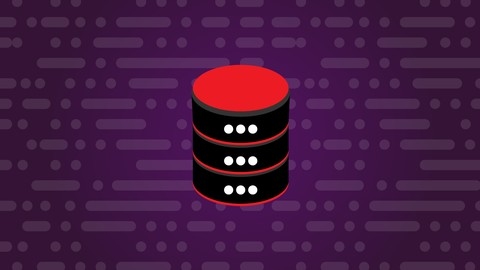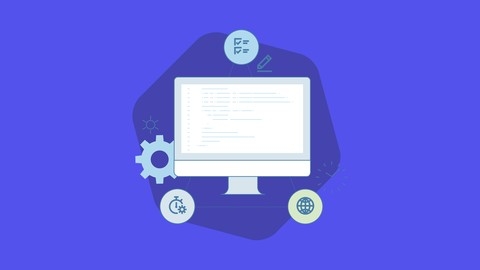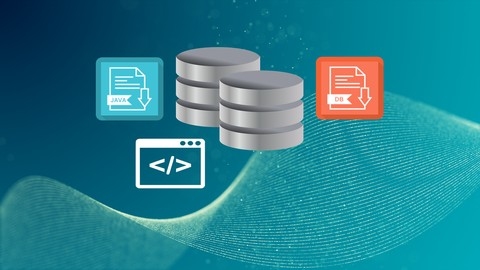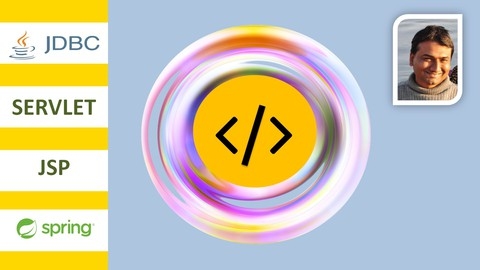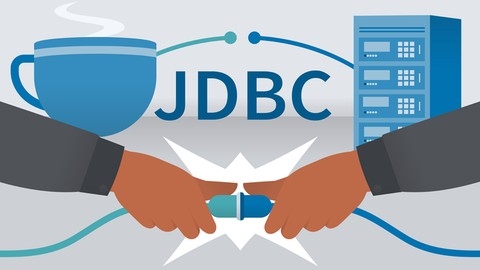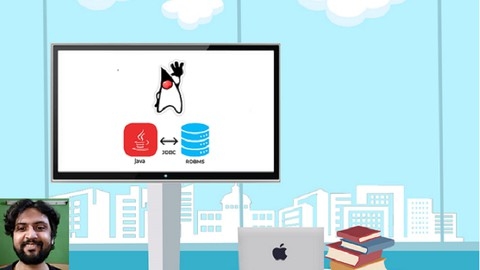JDBC (Java Database Connectivity) is a crucial technology for any Java developer looking to interact with databases.
It’s the backbone of countless applications, enabling them to store, retrieve, and manipulate data seamlessly.
By mastering JDBC, you’ll gain the ability to build robust and dynamic applications that leverage the power of databases like MySQL, Oracle, and more.
You’ll be able to create everything from simple data-driven applications to complex enterprise systems.
With the growing demand for developers skilled in database interaction, finding the right JDBC course is essential.
However, sifting through the vast landscape of online courses can be overwhelming.
You’re looking for a course that not only covers the fundamentals but also provides practical examples, hands-on exercises, and real-world applications to solidify your understanding.
Based on our extensive research, we recommend Complete JDBC Programming Part-1 as the best overall JDBC course on Udemy.
This course offers a comprehensive introduction to JDBC, covering everything from basic concepts to advanced techniques.
You’ll learn how to connect to different databases, execute queries, perform CRUD operations, and handle exceptions, all within a clear and structured learning environment.
While this is our top recommendation, we understand that different learners have different preferences and needs.
Therefore, we’ve compiled a list of other excellent JDBC courses on Udemy, catering to various skill levels and specific interests.
Keep reading to explore our top picks and discover the perfect course to launch your JDBC journey.
Complete JDBC Programming Part-1
You want to become a Java programmer who can connect to databases.
This JDBC course teaches you how to use JDBC to talk to databases like Oracle and MySQL.
You’ll start with the basics: JDBC’s architecture and how it connects Java to databases.
You’ll explore the history of JDBC, the different versions, and the different types of drivers that connect Java to a database.
Then you’ll learn how to build JDBC applications and interact with databases using JDBC’s core classes.
The course teaches you all of the CRUD operations (Create, Read, Update, Delete).
You’ll also learn about aggregate functions and how to use them in SQL queries.
Finally, you’ll learn how to use JDBC with popular Java IDEs like Eclipse, NetBeans, IntelliJ IDEA, BlueJ, and JGrasp.
The course teaches you how to write efficient and reusable JDBC code for real-world applications.
By the course’s end, you’ll know how to develop robust database-driven applications.
Complete JDBC Programming Part-2
This course takes you on a deep dive into JDBC, teaching you how to use Java to talk to databases.
You’ll start with PreparedStatement, a powerful tool that helps you write faster, more secure code.
You’ll learn how it protects against SQL injection attacks and see firsthand how it outperforms the simpler Statement object.
Next, you’ll discover the world of Stored Procedures, learning how to write these reusable database routines in Oracle and call them directly from your Java code.
You’ll also master the art of matching Java data types to their database equivalents, ensuring seamless communication between your applications and databases.
You’ll become an expert in Batch Updates, a technique for supercharging your database operations.
Instead of sending one update at a time, you’ll learn to bundle them together for maximum efficiency.
You’ll also discover how to work with different types of data, like dates, large text files (CLOB), and even images and other binary data (BLOB).
This course arms you with the tools for building professional-grade applications.
You’ll learn how to manage database connections efficiently with Connection Pooling and ensure data integrity with Transaction Management, using techniques like savepoints and transaction isolation levels.
You’ll also explore MetaData, which lets your Java code ask the database about its structure, and learn about RowSets, powerful components for working with datasets offline.
Java JDBC with Oracle: Build a CRUD Application
This course takes you on a journey, from learning the basics of JDBC, which lets your Java applications talk to databases, to building a complete CRUD application.
You begin with the foundation: installing the JDK and Eclipse IDE for coding and setting up an Oracle database.
You then dive into the core of JDBC, understanding different JDBC drivers, the essential classes and interfaces, and how to establish a connection to your database.
The course then shifts from theory to practice.
You will learn how to write code to fetch data from your database and perform basic operations like creating tables, inserting data, updating records, and deleting data.
You discover how to use Statement and PreparedStatement objects, the workhorses of JDBC for interacting with your database.
You also explore advanced techniques like using CallableStatement to execute stored procedures, special pre-compiled code snippets stored in your database.
The course doesn’t stop at basic database interactions.
You learn how to use ResultSetMetaData and DatabaseMetaData to analyze the structure of your database and query results.
You even discover how to store and retrieve images and files from your database, a must-have skill for modern applications.
The course culminates in a challenging and rewarding project: building a complete CRUD application from the ground up.
You will apply everything you learned to create a real-world application, including designing POJO classes to hold your data, building DAO classes to manage database operations, and writing the application logic to tie everything together.
Master JDBC Servlet JSP Spring | Learn Advance Java Basics
You’ll begin by mastering the fundamentals of client-server architecture and how web applications interact with databases.
The course then dives into JDBC, teaching you how to connect Java applications to popular databases like MySQL and Oracle using SQL queries.
You’ll become proficient in writing code to connect to databases, manage data, and handle any potential errors along the way.
Next, you’ll explore the world of servlets, learning how to build dynamic web applications that respond to user requests.
You’ll gain a deep understanding of the request-response cycle, manage user sessions using techniques like cookies, and learn how to redirect requests and handle errors effectively.
The course then delves into JSP, teaching you how to create dynamic web pages by embedding Java code directly into HTML.
Finally, you’ll discover the power of the Spring Framework, a popular tool for building robust web applications.
You’ll master the Model-View-Controller (MVC) architecture, a design pattern that helps you write organized and maintainable code.
Using the Spring Tool Suite (STS), you’ll learn to create and manage your Spring projects, connect to databases, and even implement user authentication features like login and registration forms.
Java Database Connectivity (JDBC)
This course teaches you how to use Java to connect to and interact with databases using JDBC.
You start with the basics: establishing a connection to a database.
You then learn how to execute SQL commands like DML commands to insert, update, and delete data, and how to execute queries to retrieve data.
You dive deeper into more advanced topics like prepared statements, a secure way to execute queries and prevent SQL injection attacks.
You learn about stored procedures, which are reusable code blocks stored in the database, and callable statements, which allow you to execute them.
You also learn about batch execution for executing multiple statements at once and how to work with auto-incrementing columns, commonly used in databases.
You learn about working with binary data (like images and files) stored in a database.
The course covers the Blob column type and how to use JDBC to interact with it.
Finally, you learn about transaction management, which ensures your database operations are completed reliably.
You learn how to use JDBC to manage transactions and make your database applications more dependable.
Learn JDBC 3.0 in 2.0 hours : Practical Master Class
This course teaches you the fundamentals of Java Database Connectivity (JDBC) and helps you apply your knowledge practically using JDK 17, IntelliJ Idea, and MySQL Server.
You will learn how to connect to a database and use Java to interact with it.
You will learn about the Jdbc-Mysql Connector Jar, which allows your Java program to communicate with a database.
The course starts with the basics of database interaction using CRUD operations.
You’ll discover how to read data from your database, add new data, modify existing data, and delete data.
The course then delves into the different types of JDBC drivers, explaining their strengths and weaknesses.
You’ll understand how to choose the right driver for your specific needs.
You will then transition to advanced JDBC concepts, such as Prepared Statements, which help optimize your code and make it more secure.
You’ll learn how to work with Callable Statements, enabling you to interact with stored procedures in your database, both with and without parameters.
You’ll also discover how to use Batch Operations to efficiently execute multiple database changes at once.
Finally, you’ll dive into Transactions, a critical aspect of database management.
You’ll learn how to use Commit and Rollback to ensure data consistency.
This course covers the Savepoint feature in JDBC 3.0, which allows you to create checkpoints within a transaction, giving you more control over how you manage your data.
JSP, Servlets and JDBC for Beginners: Build a Database App
This course is a fantastic starting point if you want to build web applications that interact with databases.
You start by setting up your development environment with Tomcat, Eclipse, and MySQL.
The course guides you through the process and helps you troubleshoot common setup problems.
You then learn the basics of JSP, including expressions, scriptlets, and declarations, and discover how to handle user input using HTML forms.
The course teaches you how to manage user sessions, personalize content with cookies, and write efficient code with JSTL.
You then move on to Servlets, learning how they work with JSP to create dynamic web applications.
The course explains the difference between JSP and Servlets and teaches you how to read HTML form data using Servlets.
You will gain hands-on experience with MVC architecture as you build a web application that interacts with a MySQL database using JDBC.
You’ll learn how to connect to a database, create tables, and use SQL queries to interact with data.
The course demonstrates how to implement CRUD (Create, Read, Update, Delete) operations by building a student management system.
Throughout this course, you’ll find answers to common questions and helpful tips.
This course gives you a strong foundation in building dynamic, database-driven web applications.
You’ll become comfortable with technologies like HTML, Tomcat, Bootstrap, JDBC, JSTL, MVC, Maven, JSP, MySQL, Servlets, Eclipse, and CSS.
JDBC Servlets and JSP - Java Web Development Fundamentals
This course teaches you how to build dynamic web applications using Java.
This course starts with the basics, so don’t worry if you are a beginner.
You’ll discover the difference between static and dynamic web applications and then jump into Servlets, which are Java programs that handle web browser requests.
You’ll learn how to set up your development environment with tools like Java, Eclipse, and Tomcat.
The course then dives into JDBC, showing you how to connect your web application to a database.
You will learn how to work with databases using techniques like CRUD (Create, Read, Update, Delete) operations, prepared statements, and ResultSets.
The course also covers advanced JDBC topics like batch updates, ResultSetMetaData, and transaction management, which are key for working with databases effectively.
You’ll also explore how to use Servlets, JDBC, and JSP to build dynamic web applications.
You’ll learn about the Servlet lifecycle, how to handle HTTP requests and responses, how to display data from a database on web pages, and how to manage user sessions.
The course covers essential concepts such as MVC (Model-View-Controller) design pattern, session management, web security, and custom tag creation.
You’ll gain a solid understanding of how to build well-structured, efficient, and secure web applications.
